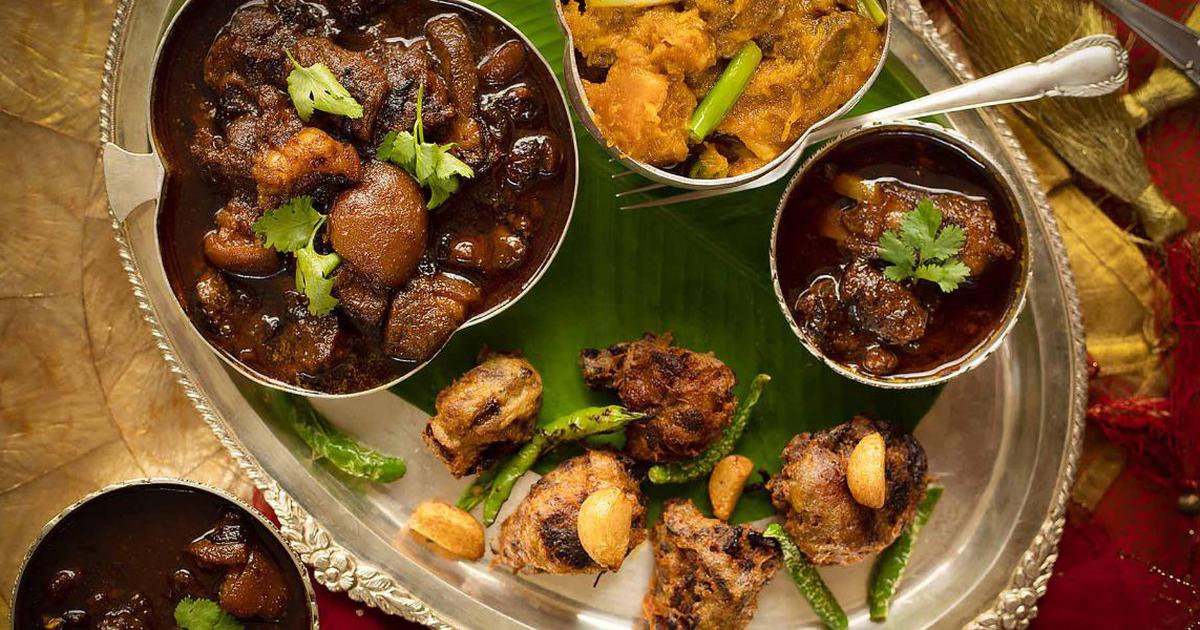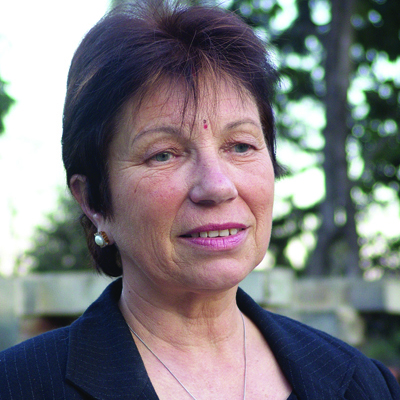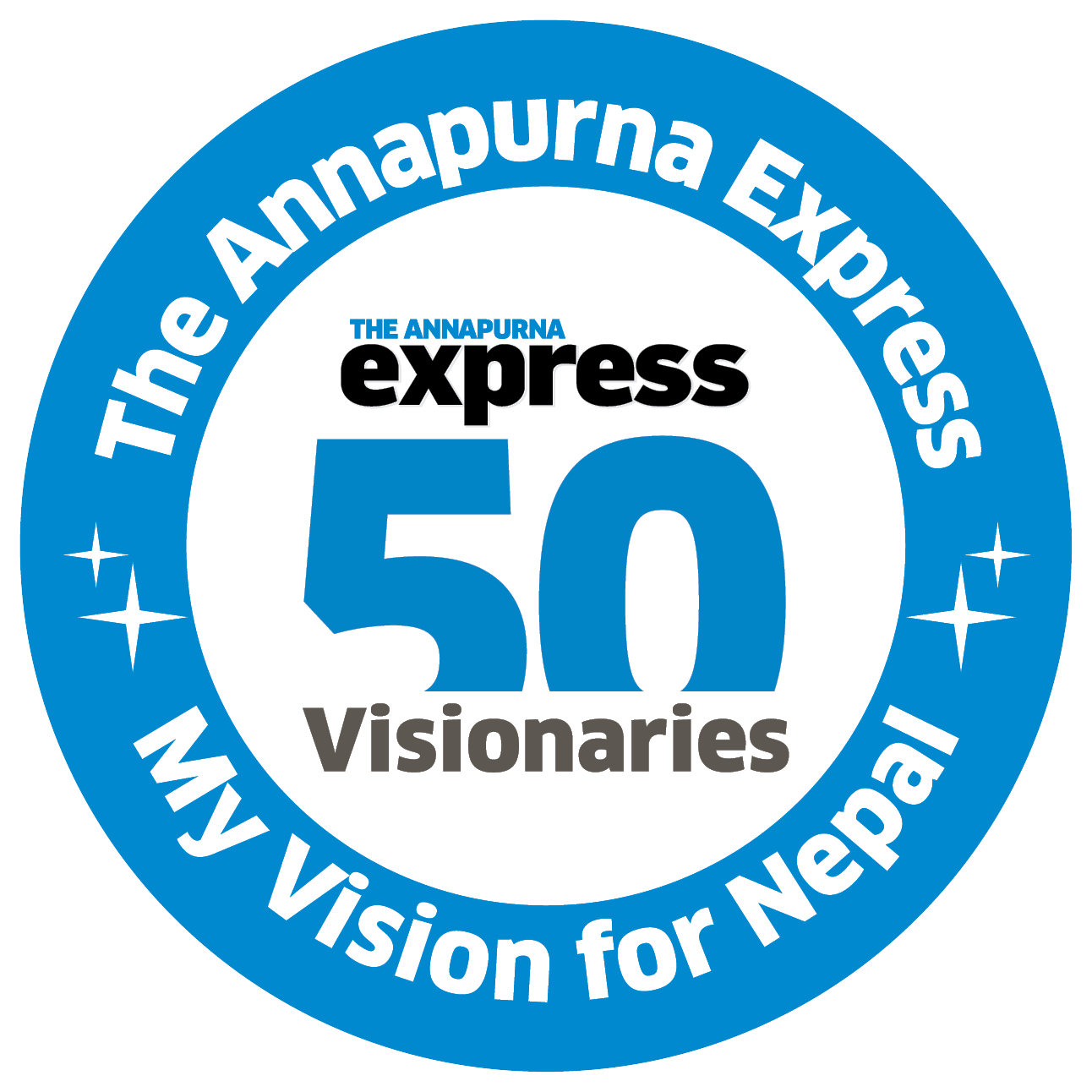My Vision for Nepal | Establish towns in the mountains
Establish towns in the mountains
Three ways to realize the vision:
1) Modernization of agriculture.
2) More practical education.
3) Financing of local entrepreneurs by banks.
I have a simple vision to develop Nepal, especially the mountainous region. My vision is to develop towns in the mountains where all services are available—as in Kathmandu—as well as jobs, so that our youths don’t have to labor in foreign lands.
To realize this vision, we have to work from the grassroots. As we all know, Nepal is an agricultural country and there can be no development here without developing agriculture, and for this our agricultural practices must be modernized. The government should hire top-level experts and work with concrete plans.
Agriculture modernization must not include the use of chemical pesticides. Rather, we need scientific ways of planting and harvesting. We are rich in water resources but still unable to irrigate our farms. Scientific and modern agriculture will solve that problem too.
Second, our education system lacks a lot of things. What I think is, our education system has also halted our progress in many ways. Hence education should include job training and not just the same old classical subjects—it must be practical. We won’t get anywhere with the outdated curricula that simply don't contribute to our society.
After we modernize agriculture and improve our education, we’d need investments. For this, the government and concerned authorities should encourage banks to finance local entrepreneurs and endeavors in order to utilize their knowledge. We don’t need large investments, and lack of them should not stop us from productive development.
The Himalayas of Nepal are full of micro-climates. We have a comparative advantage as we can grow anything here. We can grow fruits and vegetables when it is off-season for them elsewhere and then export them. This will give Nepal much-needed revenue.
Also read: Sujeev Shakya | A complete transformation of Nepal
I have had this idea for a long time, ever since my days working in the mountains. Further, we can import skills. Retired artisans from other mountain areas can be brought in to help. One idea would be to bring the Harris Tweed weavers from the Hebrides to help develop the ‘allo’ cloth industry. There are Scottish universities that would help us with this. Our leather workers would greatly benefit from retired, skilled cordwainers coming to help young craftsmen.
Progress in the development of these skills is hampered by caste discrimination. The government should step in here by giving awards not only to people of letters but also to people who have actual skills. For example, look at how we look down on plumbers. Yet without proper plumbing and sanitation, no town, city or village can thrive.
Moreover, I dream that Nepal has enough electricity for each home, that every home gets running water as well as a microwave and washing machine to take the drudgery out of people’s lives. I think with proper governance, this should be achievable within the next two decades, especially with mini and micro hydel. Then my vision would be realized and we would no longer be colonized by development aid. We own the most precious resource in the world, the waters of the Himalayas.
People in power forget that tourists come here to see our natural beauty. So we must take care of our natural landscapes. All the infrastructure works should be planned accordingly. For that, we should stop investing in big dams that destroy the scenery of Nepal. The answer is a mini-micro hydel that can be handled without imported equipment. It was a Nepali who invented the peltric set—a water-powered turbine for mountainous regions—and yet we were the last to take advantage of it. We have to stop idolizing ‘foreign’ things and make and buy local products. This way, my vision would be fulfilled.
All this takes governance and not dictatorship or ‘rule’. The key is in our hands and we should vote accordingly. Many Nepalis do not know the power of the vote, so again, this essential thing should be kept in the primary school curriculum. It is a part of political literacy—a must-learn thing.
Quick Questions:
Which author inspired you to start writing?
Emily Brontë.
Who is your favorite Nepali writer?
Dhruba Chandra Gautam.
What are three of your all-time favorite books?
‘Les Misérables’ by Victor Hugo, ‘Wuthering Heights’ by Emily Brontë, and ‘Great Expectations’ by Charles Dickens.
Book Review: Eating your heart out
In ‘Gone Away’ by Dom Moraes, Chapter 4 is called ‘Living Like a Rana’. The most significant thing he seems to remember from staying in a Rana palace is that his hosts sent him a woman to warm his bed. Tantalizing as that may seem to some, there were other delights to be had within the walls of these palaces. These have been catalogued by Rohini Rana in her new ‘Rana Cookbook’.
These are recipes from the palaces of Nepal and though Rohini didn’t get them all she got a good number: 134 plus some from feasts and festivals. Eight of them I shall review here and you can try them at home, after getting the book, which I heartily advise.
In a splendid production of Penguin Random House, India, each recipe is magnificently illustrated. The recipes are divided into sections. This is useful as not everyone has the same tastes and one can choose the section one is most interested in.
Rohini, or Dolly as she is known, spent a lot of time researching this book and spoke to many relatives and old-timers who had cooked in the palaces. Born in India and married into a prominent Rana family, her husband is former Chief of Army Staff, Gaurav Shumshere JB Rana. They are from the family of prime minister Chandra Shumshere and their family durbar has now become Babar Mahal Revisited, a favorite haunt of tourists and Nepalis alike and well restored by her brother-in-law Gautam Shumshere and architect Eric Theophile.
Dolly used to run a restaurant there and it is still well worth a visit. Also in the same complex is the renowned French restaurant ‘Chez Caroline’ and so one can taste food from two continents. Many do, for the complex has many interesting stores and one can well while away a full day. But back to the book.

One memorable recipe is number six, which is chicken pulao. The thing that should be noted is that until the early 70s the Ranas did not eat chicken, which was thought to be ‘bitulo’. They would have eaten ‘kasiko pulao’ but of course nowadays chicken is accepted and goat meat is darned expensive. How have the times changed! Of course partridge pulao was another favorite and still is if one can get the birds.
This recipe was provided by Dolly’s uncle-in-law Sagar Shumshere, and now we should remember what good cooks Rana men tended to be. Probably because in the past they spent so much time in army camps without people to cook. Brahmins were the chief cooks because of the sacredness of rice but not all Brahmin men would join the army. Whatever, Rana men were good cooks, some of them still are. Why not when they had all the best ingredients at their disposal.
A sine qua non, especially for marriages and rice feeding ceremonies, appears in recipe 16. It is, of course, wild boar. In the old days pork was forbidden as ‘bitulo’ but strangely the wild pig was deemed okay. These were hunted in great numbers in the Tarai, but would later be captured and kept in the palaces, fed for pending feasts. A wedding without wild boar was a flop before it started.
Recipe 16 gives you fried wild boar, a great treat. Dolly got this recipe from brother-in-law Nanda Rana and just reading how it is made makes the mouth water.
Mutton Gravy, which is number 24, is from the family of Padma Shumshere and contributed by Colonel Jeevan Thapa, son of Padma’s granddaughter. This goes to show how far these recipes were handed down and the painstaking research that Dolly conducted.
Chicken potato chops (recipe 44) are great on picnics. Given by Sangita Rana it was provided by her maid Savita.
Recipe 66, green pea lentils, provided by Rama Malla, favorite daughter of Padma Shumshere and owner of Malla Hotel, is a recipe that will probably be appreciated by Asians and Europeans alike. Green pea lentils are the ones most commonly exported after all.
Next I recommend the vegetable medley or ‘mis mas’ provided by Jaya Rajya Laxmi Shah of Shah Mahal, daughter of Samrajya Shumshere, and actually one of the best cooks ever. Try this recipe, do.
Now we come to recipe 103, one of my favorites, beaten rice with either meat or vegetables, a great tea-time snack. Never mind tea time, it’s good any time. Try it.
My final choice is recipe 115, another favorite and good with 103. It is black charcoal grilled tomato pickle, provided again by my favorite cook Jaya Shah of Shah Mahal. This was actually one of the things I first learned to make on arriving in Nepal.
All in all, Dolly has done a splendid job in bringing so many recipes together. Now they can be handed down. After all so many things were destroyed in public anger against the Ranas, which was not always justified. After all those who destroy history destroy the future. What is the future but our past improved?
I recommend this book for the wonderful recipes but also for Dolly’s careful recording of the past. We may never live like a Rana, but with this book we can at least eat like one.
The beginnings of PEN Nepal
I suppose it all started when Dhruba Chandra Gautam wrote ‘Alikhit’ and got the Madan Puruskar. (It was later translated into English as ‘Unwritten’ by philologist Philip Pierce.) The important thing for me about it was that it forged a friendship with another writer that became significant for me and which I value to this day.
Gautam had a column in one of the leading weeklies of Panchayat time. He asked Shanti Mishra, Chief Librarian at Tribhuvan University, if she could arrange an interview with me. I’ll never know whether he knew my writing or whether Shanti promoted it, but it happened.

During the interview I told him how I had attended the First World Conference of Women Writers in Jerusalem in 1984 and how the then Secretary of International Poets, Playwrights, Essayists, Editors and Novelists (PEN) had approached me about establishing a PEN Center in Nepal. We needed 20 members to sign the PEN Charter. The Panchayat would certainly not approve, but Gautam found 20 writers with lots of guts to do so.
Shanti became the first president. We were criticized for this because she wasn’t a writer, but only by those who had refused to sign up because of Panchayat censorship. A librarian had helped Galsworthy found the first PEN so Shanti was our help in founding PEN Nepal and worthy to be its first president. We met in the British Council. Peter Moss, the Head then, now deceased, was married to Norma, who is Monorama Mathai, the renowned Telegu writer.
Gautam and I went to Toronto for the official recognition of Pen Nepal. International PEN paid our expenses. I was Secretary and Gautam Vice-President. Shanti declined her right to go. In fact she never did go to a PEN Congress but always gave her seat to writers. This should be borne in mind because it was a tremendous help to Nepali literature.
We became an established center but were not legally established in Nepal until 1990 when the late Prime Minister Krishna Prasad Bhattarai as one of his first acts as prime minister made us legal.
I won’t mention the detractors we had, mainly those who declined to sign the charter. They were afraid and we understood that. Panchayat censorship was not a joke. But it is after all ‘the Pen that gives immortality to men’ and it is in this light that I hope PEN Nepal today honours those first 20 members who were not afraid to defend the freedom of expression in those days.
Among the 20 was Ashesh Malla, director of Sarvanam street theater. His group toured the campuses carrying a message of democracy through wit and humor in a language students could understand.
The sisters Benju Sharma and Manju Kanchuli, daughters of late laureate Bhim Nidi Tiwari carried on their father’s tradition. Toya Gurung was also a founding member. So was Bhuwan Dhungana whose short story ‘The 1’000 rupee note’ always seemed to me to be a great literary gem exploring the angst of the ordinary housewife trying to make ends meet. Megh Raj Manjul and Nagendra Raj Sharma were members. Others were Dhruba Sapkota, Binod Mani Dixit, and Hemang Dixit who writes as Mani Dixit, and who signed up despite being the physician to the children of most Panchayat heavies.
One campaign we ran was for the closure of Godavari Marble Quarry, that horrid blot on the landscape. We were privy through other writers of a proposal Kew Gardens had made which would have revived the area, provided sustainable incomes and, unlike the quarry, not deprived the surrounding villages of water.
Twelve thousand people marched for this cause. Krishna Prasad Bhattarai vowed that if he won a second term he would close it down. But he didn’t win and Nepal lost the man who many of us believe was the one just person in the political mayhem of Nepal.
With the help of Lawyers for the Environment we fought a case, the first ever on behalf of the environment in Nepal. Nepal had no environmental lawyers so one was asked to come from India. He fought that ‘locus stand’ case but unfortunately lost. The owners were too smart for us and knew who to pay off I suppose. The case went on and the quarry is now closed.
PEN Nepal’s proudest moment came when it became the first Third World Center to become a member of PEN’s prestigious Writers in Prison Committee, a movement predating Amnesty International. By then PEN Nepal had helped in a number of notable cases, particularly that of Taslima Nasreen. Gautamji was prepared to travel to Bangladesh and bring her over the border disguised as a bride. Many of our writers volunteered to hide her. Fortunately the Swedes managed to get her out.
For me the greatest honor came when I was made an honorary member of the Mexican Center San Miguel de Allende. I had written a letter to President Calderon about his imprisonment of the President of Mexican PEN. I reminded him of the values of Mexico’s great leader, Juarez, and asked if he believed Juarez would have approved of locking up writers. It must have worked because he released her and the writers thought my letter did it.
So that’s that, the advent of Pen Nepal. I ceased being active believing it was time for Nepal’s writers to take charge. They made me an advisor but they don’t need my advice. Literature in Nepal has a bright future and that is what I always hoped for.
The author is the founder of Pen Nepal










